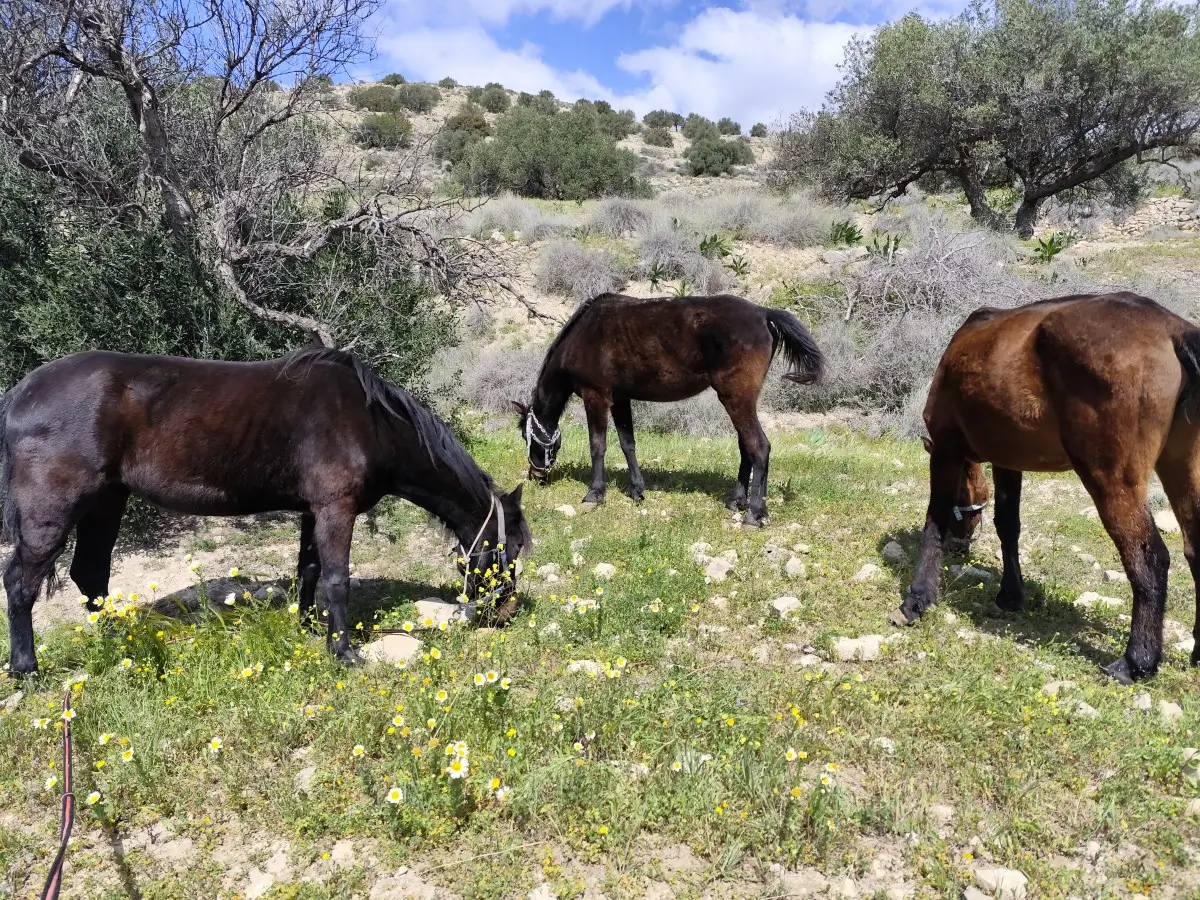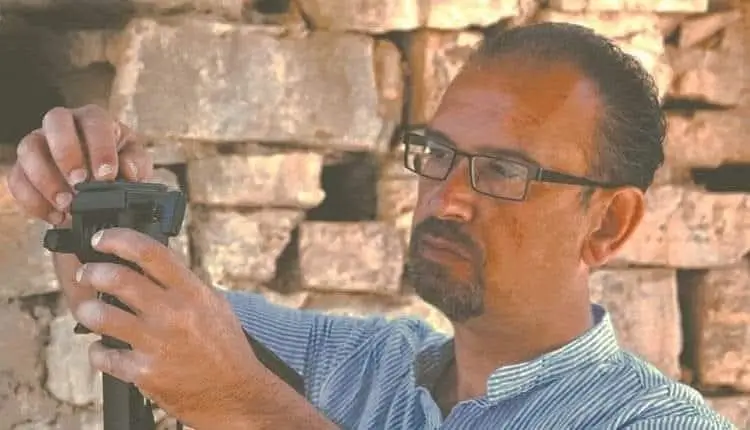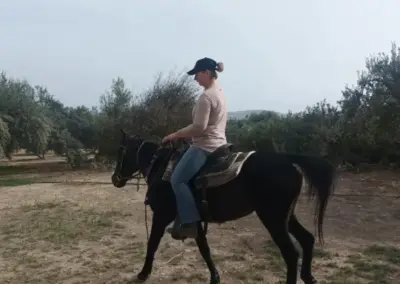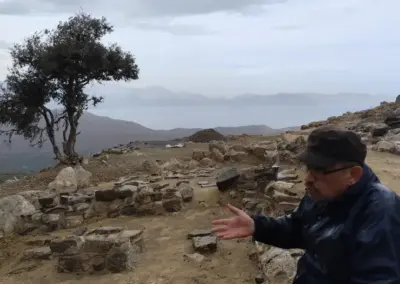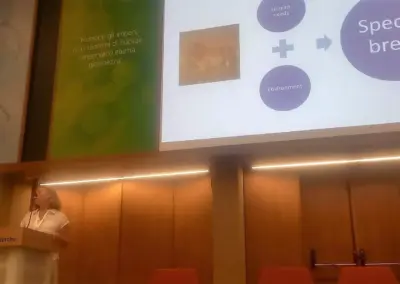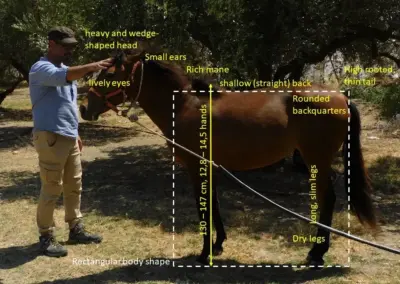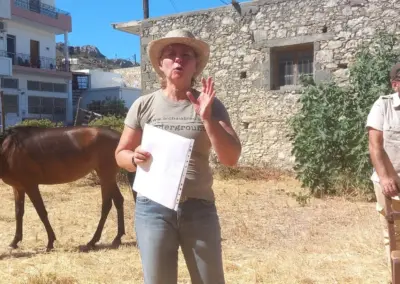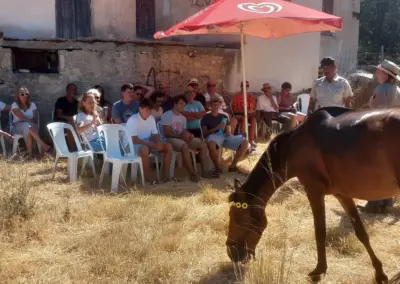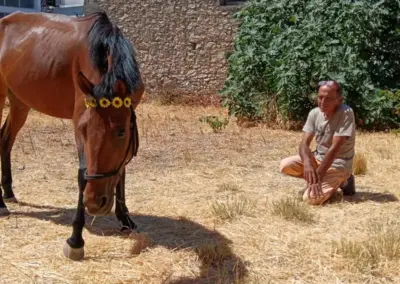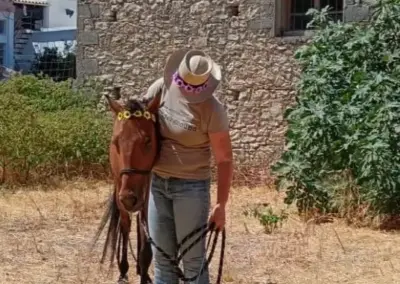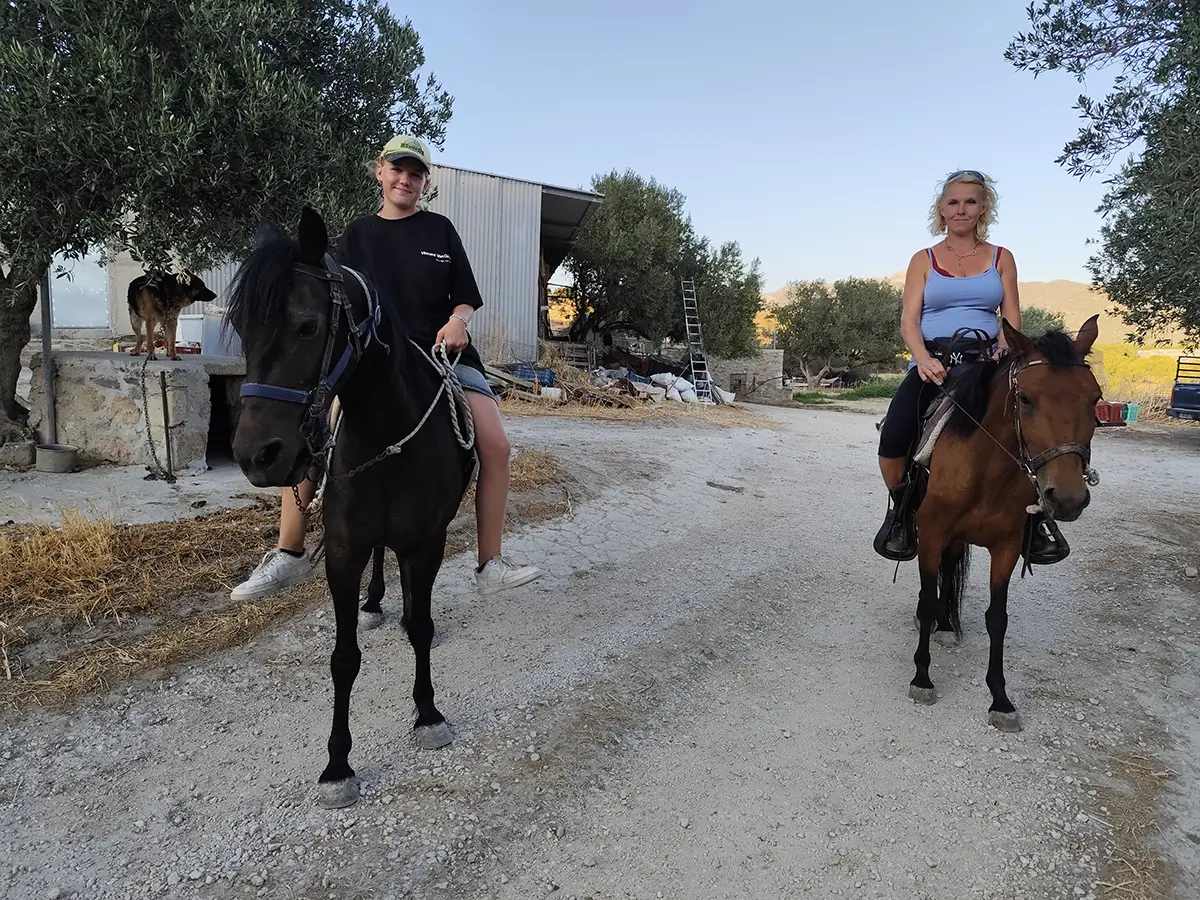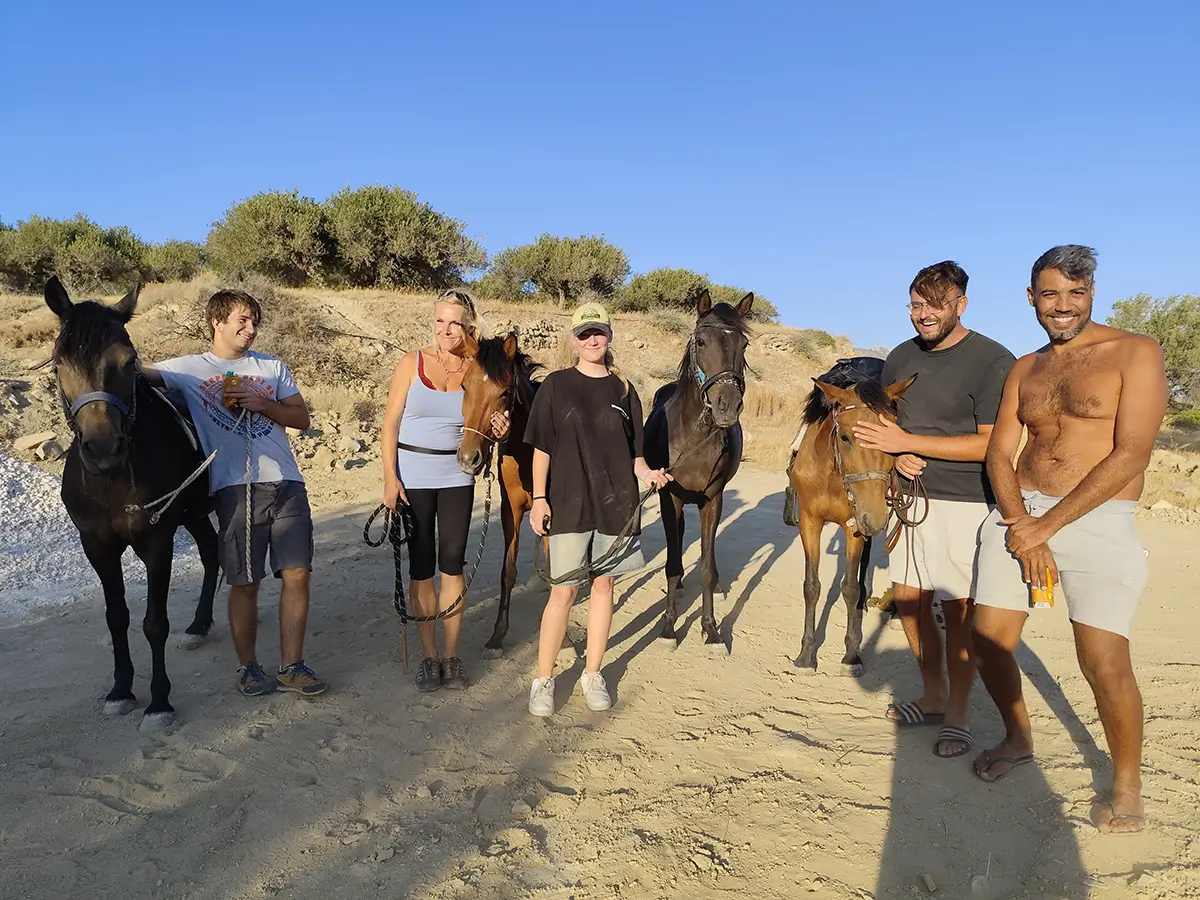Activities
Meet the Cretan Horses!
Field School
For students of:
- Hippology
- Horsemanship
- Equestrianism
- Veterinary Medicine
- Zootechnology
- Hoof Care
- Zooarchaeology and Archaeology
- Heritage Sciences
- Mediterranean Studies, etc.
And for horse enthusiasts!
The Cretan (Messara or Giogalidiko) horse represents a unique breed that has evolved within the specific landscape of the island. The tourist boom and the intensive expansion of Anthropocene ecosystems have driven this breed—and not only this species—out of its natural habitat and everyday cultural setting. Intensive efforts are now underway to save and develop the breed, including ensuring suitable living conditions for all horses on the island.
The goal of the Summer Field School is to introduce participants to the history of the breed, its unique features, and the current state of its preservation.
Dates: 30th June to 9th July 2025, in Ierapetra
Program Highlights:
- Seminars on the evolution of the Cretan ecosystem
- Seminars on the history of the Cretan horse and horsemanship on the island
- Holistic horse care at the center
- Groundwork training
- Horseback riding
- Excursions to other breeders
- Exploration of the Cretan landscape through excursions
- Industrial vs. traditional agriculture: excursions
- Archaeology of the Cretan horse
- Visits to relevant museums and monuments
- The horse as cultural and natural heritage
Graduates of the Field School will receive a certificate issued by the CRHHRC and WHAGR representative.
Our Experts:
- Vera Klontza-Jaklova: Head of the Department for Classical Archaeology at the Institute of Archaeology and Museology, Masaryk University (Brno, Czechia). Expert in equine archaeology, holistic horse care, Cretan archaeology, and heritage sciences.
- Manolis Klontzas: A Crete native and the Director of the Institute of Natural and Cultural Heritage (Brno, Czechia). Expert in Cretan archaeology, the archaeology of system metabolism, Cretan landscape, landscape archaeology and history, and heritage sciences.
Cost: €1,200
Price Includes:
- Accommodation from 30th June to 10th July 2025 in apartments equipped with a kitchen, bathroom, and internet
- Transportation (by car) to all activities
- Museum entrance fees
- All seminars, training sessions, and lectures
- Opening and closing dinners featuring typical Cretan cuisine
- Olive oil and fresh goat milk for your cooking
For questions or to express interest, please contact us via the center’s email address or at vera.klontza@phil.muni.cz.
Don’t hesitate! Places are limited.
Visit from Normandy
On 21 November 2024, farmers from Normandy visited our Centre as part of an exchange visit. These wonderful women and men have a twinning relationship with the local farming cooperatives Coccinella and Eptastiktos. They were in Crete for a week, learning about local agricultural production, its specificities, joys, and problems. Together, we visited one of the world’s oldest olive trees in Kavousi, the millennium-old olive trees around the village of Kato Chorio, and the archaeological site of Kavousi Azorias. One of the main themes was water scarcity and past water management practices.
We spent the whole afternoon in the company of Cretan horses. First, we explained the history of equine on the island and the resulting specificities of this ancient breed. We then demonstrated what the horses can do, how they were used before, and how they are used today. Some of the visitors could experience observing the Cretan landscape from horseback.
Thanks to the Caramades of Normandy for their contribution to helping the Cretan horses!
Invitation to a super ride!
Preparations are being finalized for the Equine History Collective’s annual conference (September 19-21, 2024). The Equine History Collective (https://equinehistory.org/) is an organization of researchers and the public interested in the history of all horse-related issues. The conference will be held in the United States but can be viewed online.
You can look forward to a rich program: https://equinehistory.org/conferences/ehc-2024-tech-quids-across-time/ehc-2024/
We are actively participating in the conference, and this year, we will present the “gadgets” of Greek skeleton saddles for donkeys and mules, called Samaria.
Registration for the conference is required: https://secure.lglforms.com/form_engine/s/8kehGHRAFsu7wTzN6JcWHg
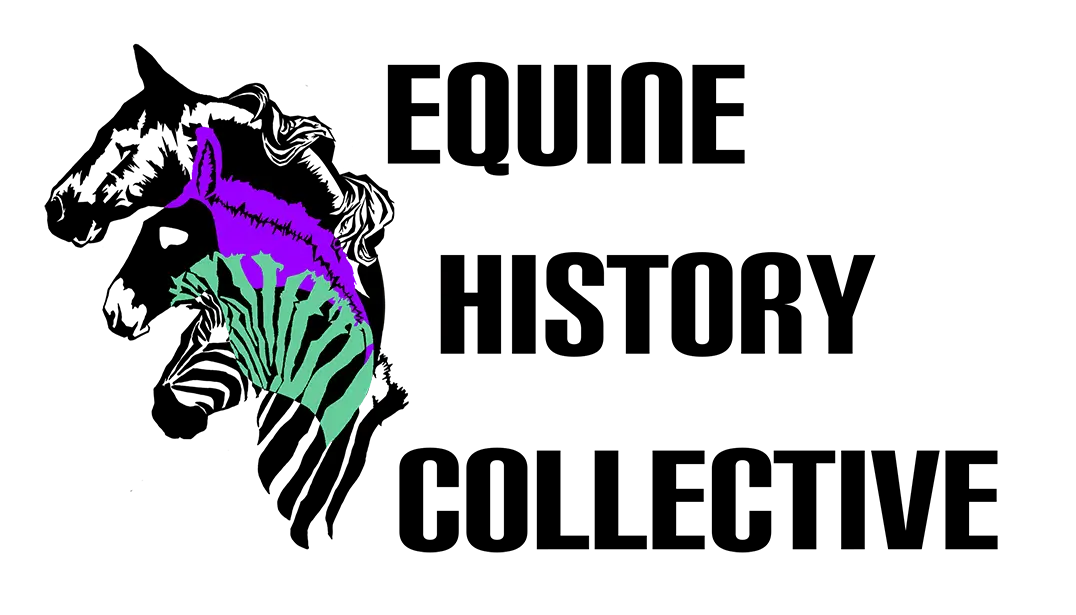
A few days ago, the Cretan horse made its debut in the salons of the biggest archaeological conference in the world at the annual meeting of the European Archaeological Association (this year in Rome: https://www.e-a-a.org/eaa2024), where about 5,000 “Indiana Joneses” gathered. EAA is the same organization that awarded the “European Archaeological Heritage Award” to the Association of the Ierapetra Citizens in 2021. It was the impetus for the continuation and further development of the collective activities of the Association of the Ierapetra Citizens.
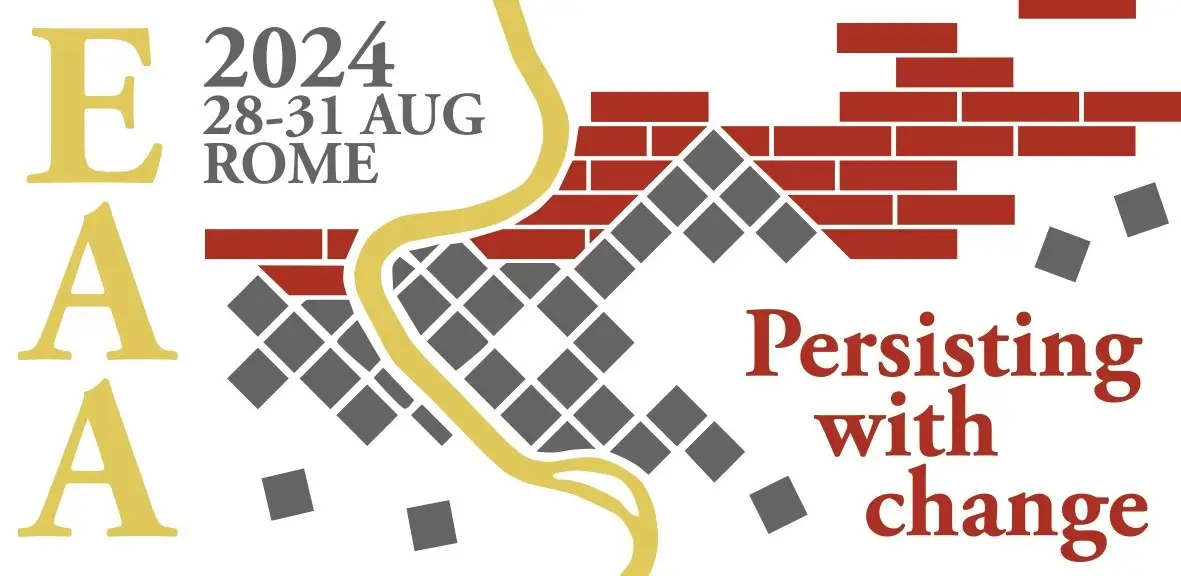
The presentation entitled “The Horse as Historical and Archaeological Source and Monument – The Case of the Cretan Horse” was part of the section “Horses in Archaeology. An interdisciplinary approach to unknown aspects of developing the cultural relationship between horses and humans.” The cultural relationship between humans and horses, the horse as a material ontological historical source, as a descendant of historical processes and relations, as a living monument, mirrors the evolution of our metabolic relations with the ecosystem. It represents today in the field of archaeology a modern dialectical, ontological, non-anthropocentric methodological approach to natural-historical evolution. It can only exist and develop further through the development of intense interdisciplinarity.
The Horse in Archaeology session featured over twenty presentations by scholars from all over Europe. The large hall was consistently full, and countless colleagues participated online. The session was accompanied by a rich, creative, and, above all, friendly group discussion.
“Giorgalidiko alogo”, i.e. the Cretan horse, is undoubtedly an integral part of the world zooarchaeology and common natural and cultural heritage. At the same time, however, in Crete, the current interspecies cultural relations, primarily as expressed in the conditions of life, breeding, care, and training, are unfortunately far from modern international equestrian standards. Sadly, they are also far from the standards of past centuries, even though horses today are not labor or energy producers.
Giorgalidiko (Cretan horse) is one of the oldest horse breeds in the world (4000 years of evolution in the relatively closed, unique ecosystem of Crete). Indeed, the horses in Crete deserve better living conditions, modern breeding organization, and education of their owners, but today, in a critical situation for its rescue, organized support from the international hippological community and the Greek state are urgent. Our newly established Centre is also active in these directions.
We want to thank all those helping to ensure that the horse remains part of the Cretan ecosystem, where it undoubtedly belongs, and all who contribute to the necessary studies and daily care. After all, “Giorgalidiko” is Crete itself! Its physiology, character, appearance, temperament, intelligence, playfulness… Today, Crete is affected by changes in land use, mutated ecosystems, the growth of dead inorganic matter, or is disappearing in the “dark corners” of our personal alienation.
One must breathe with the horse…
On August 18, 2024, my green mare, Vagia, the Dude, did her first clinic. The goal was to demonstrate that other life forms can often be communicated with much more effectively without words.
Horses communicate through body language, breath, energy fields, and chemistry. Some of these ways of communicating can be learned. We will be much more readable to our horses. We’ll reduce stress levels when they’re with us. But we will also realize that we can use these communication techniques for our own psychological well-being and relief.
At the clinic in Kato Chorio, we tried breathing with Vagia, inviting her into our “herd” and sending energy to her to get her legs moving. We learned that the communication points on the horse’s body. Horses activate them while communicating with each other. And we also talked about how horses are like children. Being a better horseman/woman is the first step to being a better parent or teacher.
We are looking forward to the next clinic, which we are planning for late September/early October, again in Kato Chorio (Ierapetra, Crete).
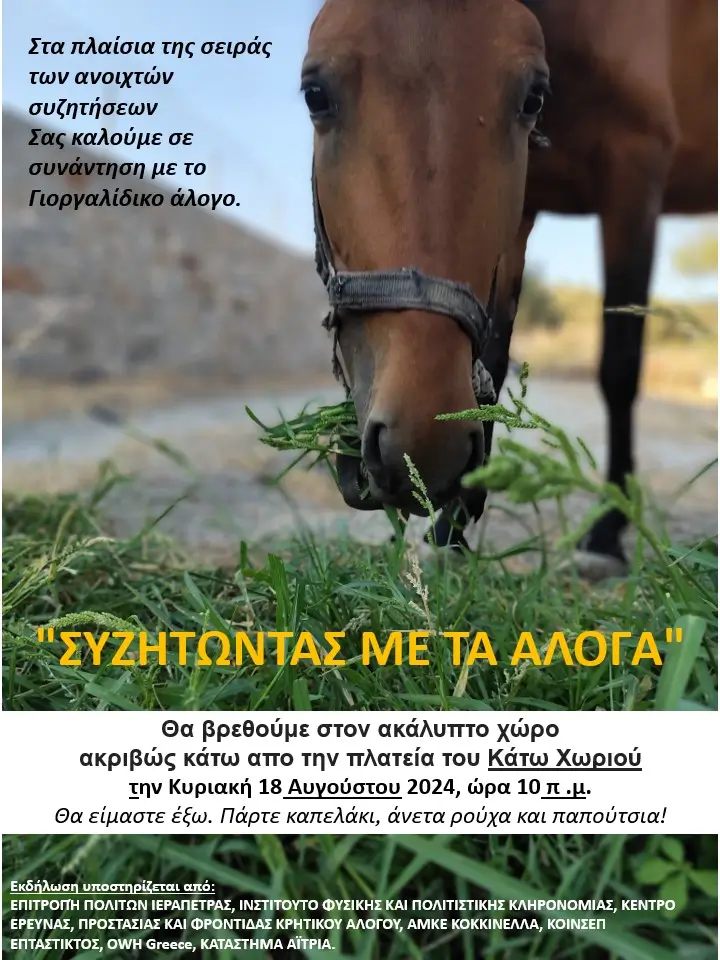
Volunteers
July 2024 marks an important milestone for our Centre. For the first time, we welcomed volunteers to our center to help us with the care and education of our mares. It was a kind of “test drive” to see how prepared we are, but also what the reactions will be from those who wanted to experience life on a real Cretan farm and learn about a little-known breed of horses.
Thank you all so much for your enthusiastic help!
We need helpers all year long!
